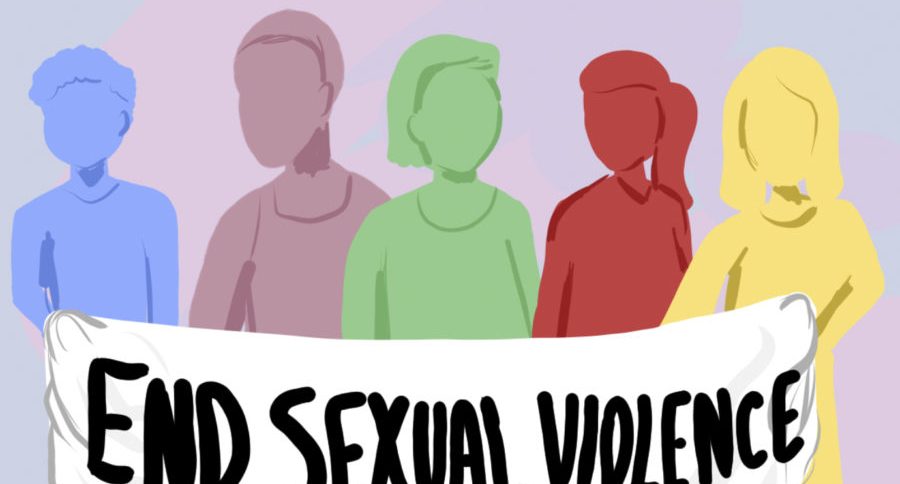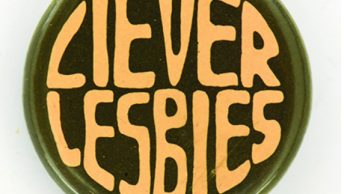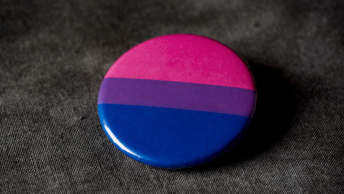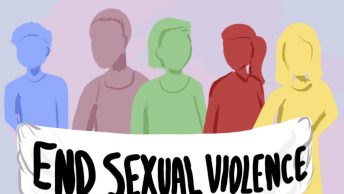Why are LGBTQ+ people more likely to be sexually assaulted, harassed, and abused then cisgender and heterosexual people (Florez)? During this blogpost series, the ways in which LGBTQ+ people are vulnerable to sexual abuse and the impact it has on their general wellbeing will be uncovered.
This first post focuses on the impacts and vulnerabilities of experiencing sexual abuse for the first two letters of the LGBTQ+; lesbian* and gay people. These identities will be analyzed against each other in order to see the similarities and differences between these groups struggles. Those who have been abused will be addressed as survivors rather than victims so as to give autonomy to the survivor who has been wronged (Papendick).
*Lesbian is traditionally defined as women who are attracted to other women, and gay is traditionally used to define men who are attracted to other men, or to define the entire LGBTQ+ (Lesbian, Gay, Bisexual, Transgender, Queer/Questioning+) community. These definitions will be used to narrow down the research that is more broadly available. It is important to note that these labels have evolved over time to include attraction to non-binary and gender-non-conforming people
Anyone of any gender, sex, sexuality, race, ethnicity, class, or ability can be a survivor of sexual abuse. Those who are LGBTQ+, disabled, and BIPOC (Black, Indigenous, People of Color) communities, are more vulnerable to being sexually harassed, assaulted, and raped than their counterparts (National Sexual Violence Resource Center).
Lindsay Sayer is a Bachelor student of Humanities and Sciences at Ithaca College
Cover photo: picture by Lauren Pettit, The Daily Evergreen.
The unique and similar struggles of lesbian and gay survivors of sexual abuse will be emphasized in this article as well as some of their intersecting identities. Incorporated into this discussion will include the immediate effects, lasting effects, and life outcomes of survivors. Overall, there will be an investigation of the impacts of sexual abuse on people who identify as lesbian or gay.
The Lesbian Survivors
When a lesbian is sexually abused by a heterosexual man, one of the potential motivations for the abuse is the fetishization of lesbians and queer women (Shulze).
Fetishization of their sexuality creates a fear of sexual aggression from men who see them as sexual objects rather than people. While some see lesbians as their fetish, others see lesbian sex as a speculated topic.
Parts of society tend to believe that lesbian sex is not real sex because penetration is not always involved. For those who define rape as non-consensual penetration, the likelihood that someone will believe a lesbian who has been raped decreases.
Lesbians and gay men alike experience greater degrees of shame when they are assaulted by someone of the same-sex. A harmful stereotype about women is that they cannot be the perpetrators of rape or sexual abuse, even in the LGBTQ+ community.
This belief effects lesbian and queer woman survivors because it is possible that they also believe that a woman could not abuse another woman at the same capacity a man could.
This idea is rooted in sexism which depicts women as homogenous and fragile victims of violence. When in reality, anyone of any gender can perpetrate this kind of abuse.
The Gay Survivors
Similar to the experience of lesbians; gay men are hyper-sexualized and thought to be significantly more promiscuous than lesbian and heterosexual people (Shulze).
Bisexuals also suffer from this expectation of promiscuity because it blames the survivor for the actions of the perpetrator, as if they wanted to be abused.
Victim blaming affects male survivors differently than women, non-binary, and gender-non-conforming people. Men experience the stigma around losing one’s masculinity by not being ‘tough enough’ to avoid being sexually abused.
Gay men have this same issue, plus the stigma of being seen as more feminine because they are attracted to men. These stereotypes inhibit gay men and masculine people from reporting abuse because of the shame of being seen as less masculine or gay.
Further, lesbians and gay men alike have less resources as survivors of sexual abuse and little exposure to queer conversations about abuse and consent (Calton).
Hookup and club culture in these communities blur the lines of consent because of the common use of substances and a lack of education about what consent should look like.
Outcomes of Sexual Abuse
Each survivor has different emotional, psychological, and physical outcomes preceding sexual abuse. While some develop mental disorders like PTSD, Depression, Anxiety Disorders, Eating Disorders, some experience a few symptoms of these disorders and others, or none at all (Rape Crisis Network Europe).
Feelings common for LGBTQ+ survivors are self-blame, feeling alone, judgement, disbelief that this could happen to a queer person, having trouble identifying yourself as a survivor, and more (RAINN).
It is common for LGBTQ+ persons to not disclose or delay disclosure of their abuse if their support system does not know that they are queer. In this case, disclosure could put the survivor at risk for further violence and loss of their support system (London Survivors Gateway). They may withhold this information because they think they will not be believed anyway.
In other instances, BIPOC, ethnic minorities, and disabled people have different struggles when reporting because they are not seen as survivors nearly as much as the dominant culture in mainstream media (Black Women and Sexual Assault).
The ideal survivor is a middle-upper class, white, straight, cisgender, woman who was abused by a powerful man. Survivors need to know that their abuse is real and valid even though they may not match the dominant expectation of what a survivor should look like.
Conclusion
Throughout this blog, there have been discussions about the vulnerability and impacts of sexual abuse on the first two identities within the LGBTQ+ community.
Research has shown that lesbian and gay people are affected by sexual abuse in comparable ways because of things like fetishization, sexualization, promiscuity, and a lack of inclusive resources. The outcomes of this kind of abuse lead to a low chance of reporting, emotional issues, a negative view of the self, and much more.
The goal of this post is to highlight the unique experiences of a community who does not always get the attention they should for their struggles.
In the next post of this series, there will be discussion about the vulnerabilities, impacts, and outcomes of sexual abuse for people who identify as bisexual, pansexual, and anyone who is attracted to multiple or all genders.
Resources for Survivors
If you or someone you know are a survivor of sexual assault, harassment, or abuse, do not hesitate to reach out to one of these resources below.
References
“About Sexual Violence.” Rape Crisis Network Europe, Daphne.
“Black Women and Sexual Assault.” The National Center on Violence Against Women in the Black Community , UJIMA, Oct. 2018.
Calton, Jenna M, et al. “Barriers to Help Seeking for Lesbian, Gay, Bisexual, Transgender, and Queer Survivors of Intimate Partner Violence.” Trauma, Violence, and Abuse, vol. 17, no. 5, Dec. 2016, pp. 585–600.
“EU LGBTI Survey II a Long Way to Go for LGBTI Equality.” European Agency for Fundamental Rights, 4 May 2020.
Flores, Andrew R., et al. “Victimization Rates and Traits of Sexual and Gender Minorities in the United States: Results from the National Crime Victimization Survey, 2017.” Science Advances, vol. 6, no. 40, 2 Oct. 2020.
“Help after Rape and Sexual Abuse in London: London Survivors Gateway.” Survivors Gateway, 7 Jan. 2022.
“LGBTQ Survivors of Sexual Violence.” RAINN.
Papendick, Michael, and Gerd Bohner. “‘Passive Victim – Strong Survivor’? Perceived Meaning of Labels Applied to Women Who Were Raped.” PLOS ONE, vol. 12, no. 5, 2017.
Schulze, Corina, et al. Gender Identity, Sexual Orientation, and Sexual Assault Challenging the Myths. Lynne Rienner Publishers, 2019.
“Statistics In-Depth.” National Sexual Violence Resource Center, Center for Disease Control and Prevention.










